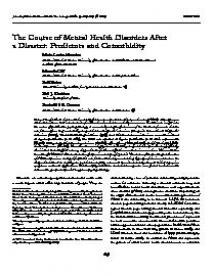The course of mental health disorders after a disaster: Predictors and comorbidity
Abstract
Current longitudinal disaster studies usually focus only on posttraumatic stress disorder (PTSD), although some studies have shown that increased risks for other disorders and comorbidity is common. To obtain an insight into the course of postdisaster psychopathology, a community sample of survivors of the Enschede fireworks disaster was followed from 2–3 weeks to 4-years postdisaster. Diagnostic interviews (Composite International Diagnostic Interview [CIDI]; World Health Organization, 1997) and childhood stressor interviews were administered at 2-years postdisaster (n = 260); the CIDI was repeated at 4-years postdisaster (n = 201, response rate 77.3%). At 2-years postdisaster many survivors (40.6%) suffered from PTSD (21.8%), specific phobia (21.5%), and/or depression (16.1%). These disorders were highly comorbid. At 4-years postdisaster, prevalence significantly diminished. Instead of full recovery, diagnostic classifications shifted in several survivors over time. This resulted in low rates of PTSD but still elevated rates of depression and specific phobia. The course of the 3 entangled disorders of PTSD, depression, and specific phobia was further studied by constructing 4 groups of survivors based on the diagnostic status at 2- and 4-years postdisaster: healthy, recovered, chronic, and delayed-onset. Initial depressive symptoms, maternal dysfunction, childhood physical abuse, and disaster exposure were found to discriminate between the groups and predict long-term psychopathology.
In: Journal of Traumatic Stress, ISSN 0894 ¬9867 | 24 | 4 | augustus | 405–413
http://onlinelibrary.wiley.com/doi/10.1002/jts.20663/abstract


